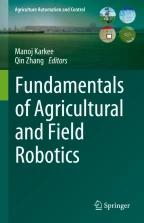
Autonomous operation of agricultural and field equipment relies on two major capabilities; (1) automated manipulation of tools/mechanisms to perform specific tasks (e.g., weeding) and (2) automated navigation of the vehicle in the field (e.g., guiding the weeding robot through crop rows). A few previous chapters included in this book discussed the principles, algorithms, and technologies used in manipulative robotics. This chapter describes the fundamentals of automatic guidance systems, including methods for positioning, navigation, and control. We begin with a short introduction to some central terms and concepts that are the basis of understanding the technical descriptions later on. We also introduce a brief history of automatic guidance in agriculture and highlight some of the motivations and requirements for modern automatic guidance systems before proceeding to explain the basics of the technical solutions in more detail. It is noted that this chapter attempts to present generic techniques on automatic guidance systems. Special considerations are essential for improving the reliability and robustness of guidance techniques for outdoor environments and off-road conditions and therefore the methods that are applied should be evaluated and chosen case by case. It is also noted that properly designed automatic guidance system has to be taken into account in the overall vehicle design process.
This is a preview of subscription content, log in via an institution to check access.
eBook EUR 160.49 Price includes VAT (France)
Softcover Book EUR 210.99 Price includes VAT (France)
Hardcover Book EUR 210.99 Price includes VAT (France)
Tax calculation will be finalised at checkout
Purchases are for personal use only